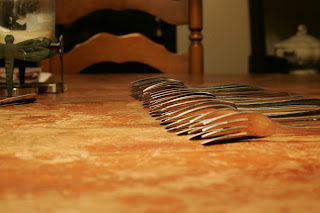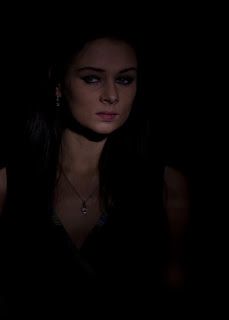THis entry has 11 photographs with brief explanations of my choices for ISO, shutter speed and F-stop. I will try to remember to post them with my photographs on Facebook also.
This first photograph is of Horse Bend just outside Page Arizona.
ISO 100, shutter speed, Shutter speed 1/25, F-stop 22 (F22). My primary concern was to have the whole photograph sharp and is the reason for the high F-stop. Since there was no motion shutter speed was not a concern. I did want to risk any digital noise so I used a low ISO 100.
F4, 1/500 Shutter Speed, ISO 400. I wanted to freeze motion, and used 1/500. The elevated ISO was to insure the shutter speed, and F4 was to provide sufficient depth of field.
F5.6, 1/640, ISO 800. This the highest ISO I trust for my camera. I wanted to freeze action, and still didn't. Little buggers are hard to stop. I would have liked to get to 1/1000 but I would have underexposed the shot. THe F5.6 is the lowest I can achieve with this lens. Don't you just love the flowers?
F4,1/2500, ISO 200. Here I wanted to freeze action. THe primary consideration was the shutter speed, and is the reason it was so high. The F-stop was set to insure she was sharp, and the ISO was slightly elevated to help with the shutter speed.
Dallas. F2.8, 1/25, ISO 800. There was hardly any light. So I raised to the highest ISO I trust, shot at the slowest shutter speed I trust, and set the F-stop to the lowest the lens would handle. Not bad for hand held.
Las Vegas. Bellagio Fountain at night. F2.8, 1/25, ISO 400. I could have made a couple of changes here. I should have raised the ISO to 800 and raised the shutter speed to 1/50 or there abouts (new word). On the other hand the motion of the water did not hurt that much. Many people when they shoot a pic like this use a flash, but I suggest not doing so. The flash isn't strong enough to do any good. Just go with the light on the fountain. There was enough light. I also shot this through glass. The flash would have ruined it. The light would have bounced off the glass and made an ugly. You might as well turn off the flash if there is glass.
F9, 1/500, ISO 100. Well here I went over to the ugly side. Almost makes me shutter to think I'm posting this "pic". I needed a faster shutter speed or a slower bird. I could have used a lower F-stop, or higher ISO. Then I could have gotten a faster shutter speed.
F7.1, 1/2500, ISO 200. THe challenge here was to stop motion, and is the reason for a high shutter speed. The F-stop could have been higher and maybe the birds would have been sharper. The ISO was to help with the shutter speed. I stood and shot for about an hour. I had never shot waves like this and needed to find a setting that would work.
F1.4, 1/6400, ISO 200. My idea here was to focus attention on the stamen. I chose the shallow depth of field, and the high shutter speed to off set it.
F8, 1/800, ISO 200. I was hoping the purple ones would be sharp, but they weren't. I should have used a slower shutter speed and a higher F-stop.
F22, 1/10, ISO 50. Here to get that flowing look of the water fall required a slow shutter speed. I had to use a tripod. THe F-stop setting and ISO were set to help get that slow shutter speed.
I hope these examples help you understand ISO, F-stop, and shutter speed. I have not told you all the whole story though. All DSLR's have settings allowing the photographer to decide the F-stop and letting the camera to decide the shutter speed or the photographer to decide shutter speed and the camera to decide the F-stop. I can not help much with the settings, because each manufacturer is different. I suggest you find something stationary and mess with the settings. Go ahead over/underexpose a few photographs and change each of the settings, you will learn. You will start to recognize the trade off among ISO, shutter speed, and F-stop.
There is another dynamic about depth of field I should have discussed. THe distance that is sharp changes as you get closer or further away from the subject. As you get closer the distance that is sharp will get smaller, and if you get further away it will get greater. Now I know there is a scientific explanation for this, but you will not find it here. It is just not my cup of expresso. So anyway if you are 100 feet away from the subject maybe 2 feet will be sharp, but if you are 10 feet away only 4 inches will be sharp. Now just so you understand I just made all those numbers up. I'm just hoping you understand. If not well write me.
I have had a couple of people talk to me recently about wildlife photography. They wanted to know how to get those photographs. Wild life photographers are good hunters. They have learned patience. They can wait on a subject for a long time. They get to understand the subject's habits. They have equipment ready. I will usually put my 400mm lens on the camera before leaving the house or car. I will set it at the fastest shutter speed the light will allow and then adjust ISO and F-stop accordingly. There is just not a way to set ISO, shutter speed, or F-stop as turkeys fly off or deer bolt. It just doesn't happen.
Next time light outside the camera.
F9, 1/500, ISO 100. Well here I went over to the ugly side. Almost makes me shutter to think I'm posting this "pic". I needed a faster shutter speed or a slower bird. I could have used a lower F-stop, or higher ISO. Then I could have gotten a faster shutter speed.
F7.1, 1/2500, ISO 200. THe challenge here was to stop motion, and is the reason for a high shutter speed. The F-stop could have been higher and maybe the birds would have been sharper. The ISO was to help with the shutter speed. I stood and shot for about an hour. I had never shot waves like this and needed to find a setting that would work.
F1.4, 1/6400, ISO 200. My idea here was to focus attention on the stamen. I chose the shallow depth of field, and the high shutter speed to off set it.
F8, 1/800, ISO 200. I was hoping the purple ones would be sharp, but they weren't. I should have used a slower shutter speed and a higher F-stop.
F22, 1/10, ISO 50. Here to get that flowing look of the water fall required a slow shutter speed. I had to use a tripod. THe F-stop setting and ISO were set to help get that slow shutter speed.
I hope these examples help you understand ISO, F-stop, and shutter speed. I have not told you all the whole story though. All DSLR's have settings allowing the photographer to decide the F-stop and letting the camera to decide the shutter speed or the photographer to decide shutter speed and the camera to decide the F-stop. I can not help much with the settings, because each manufacturer is different. I suggest you find something stationary and mess with the settings. Go ahead over/underexpose a few photographs and change each of the settings, you will learn. You will start to recognize the trade off among ISO, shutter speed, and F-stop.
There is another dynamic about depth of field I should have discussed. THe distance that is sharp changes as you get closer or further away from the subject. As you get closer the distance that is sharp will get smaller, and if you get further away it will get greater. Now I know there is a scientific explanation for this, but you will not find it here. It is just not my cup of expresso. So anyway if you are 100 feet away from the subject maybe 2 feet will be sharp, but if you are 10 feet away only 4 inches will be sharp. Now just so you understand I just made all those numbers up. I'm just hoping you understand. If not well write me.
I have had a couple of people talk to me recently about wildlife photography. They wanted to know how to get those photographs. Wild life photographers are good hunters. They have learned patience. They can wait on a subject for a long time. They get to understand the subject's habits. They have equipment ready. I will usually put my 400mm lens on the camera before leaving the house or car. I will set it at the fastest shutter speed the light will allow and then adjust ISO and F-stop accordingly. There is just not a way to set ISO, shutter speed, or F-stop as turkeys fly off or deer bolt. It just doesn't happen.
Next time light outside the camera.





































